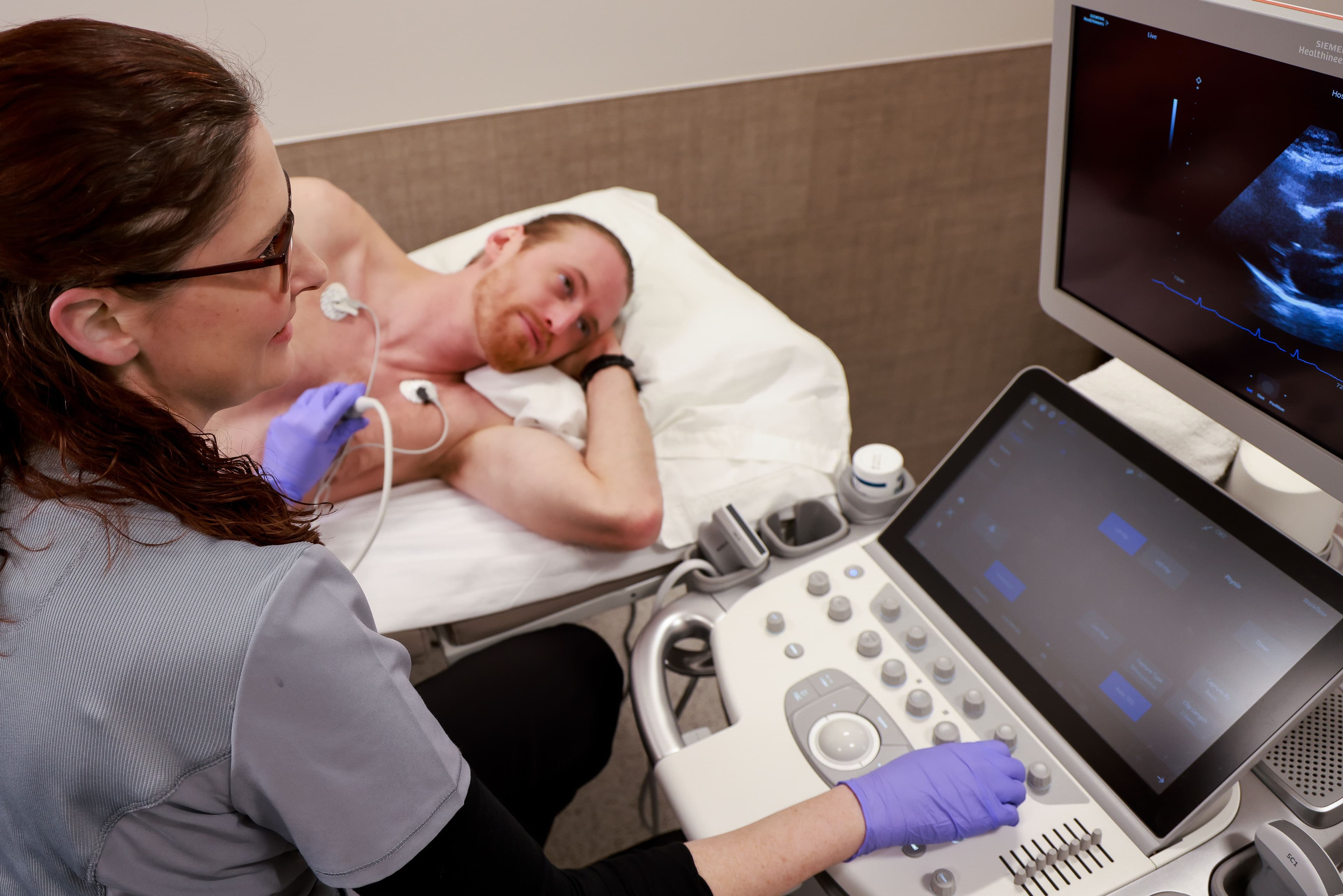Imaging
Ankle brachial index testing
What is ankle brachial index (ABI) testing?
ABI testing is a non-invasive and painless procedure designed to assess the circulation in your lower limbs. It involves measuring the blood pressure in your ankles and comparing it to the blood pressure in your arms. This simple yet effective test provides valuable insights into the health of your arteries, helping to identify potential issues such as peripheral artery disease (PAD).
What is PAD?
Peripheral artery disease (PAD) is a serious disease that can be diagnosed easily with simple methods. PAD is caused by atherosclerosis, a buildup of plaque in the walls of the peripheral arteries. In PAD, plaque narrows or blocks the arteries in the legs and arms, reducing blood flow. People with PAD have an increased risk for coronary artery disease, heart attack and stroke, and lower limb tissue injury. Untreated, PAD can greatly increase a patient’s risk for more serious conditions, such as kidney disease and gangrene, which can lead to leg amputation. It can also diminish one’s ability to function and participate in daily activities. Symptoms such as intermittent claudication, which causes pain with walking, can be debilitating and reduce quality of life. Some cases of PAD can be successfully treated with lifestyle modifications and medications, although surgery is sometimes necessary.
Who is at risk for PAD?
Peripheral artery disease (PAD) can affect individuals differently, and recognizing key risk factors is crucial for early detection and prevention.
- Smoking: Individuals who smoke or have a history of smoking are at an increased risk for PAD. Smoking contributes to the narrowing and hardening of arteries, limiting blood flow to the extremities.
- Diabetes: Diabetes is a significant risk factor for PAD, particularly if it is poorly controlled. Elevated blood sugar levels can damage blood vessels over time, increasing the likelihood of arterial issues.
- Age over 50: As individuals age, the risk of developing PAD increases. It's important to be vigilant about vascular health, especially for those over 50, as age-related changes can impact blood circulation.
- High blood pressure: Hypertension, or high blood pressure, is a key contributor to arterial damage. Uncontrolled high blood pressure can lead to atherosclerosis, a condition where arteries become narrowed and hardened.
- Obesity: Excess weight can strain the circulatory system, contributing to the development of PAD. Maintaining a healthy weight through a balanced diet and regular exercise is crucial for vascular well-being.
- Family history: A family history of PAD or cardiovascular diseases can increase an individual's predisposition to the condition. Genetic factors may play a role in the development of arterial issues.
- High cholesterol: Elevated levels of cholesterol, particularly low-density lipoprotein (LDL) or "bad" cholesterol, can contribute to the buildup of plaque in the arteries, restricting blood flow.
What to expect during ABI testing
During the ABI test, blood pressure cuffs are placed on your arms and ankles. The results provide a ratio that indicates the efficiency of blood flow to your lower extremities. This painless procedure is a proactive step towards understanding and optimizing your vascular health.
